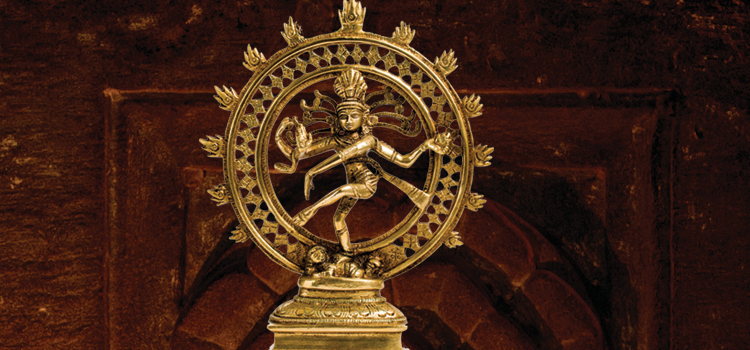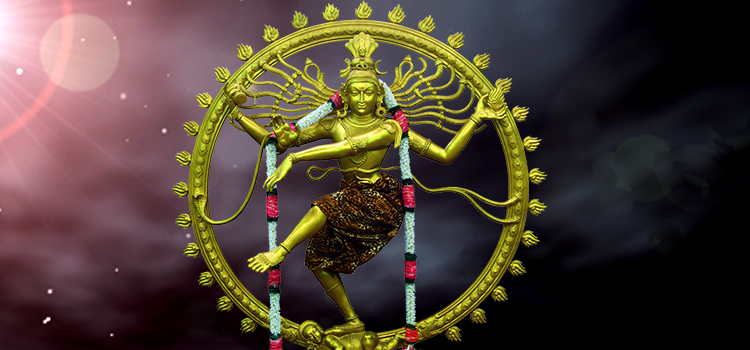Lord Shiva is celebrated as the divine dancer, and Arudra Darshan is an auspicious occasion that commemorates this particular feature of the Lord.
Arudra is a star, and that is also called as Thiruvathirai in states like Tamil Nadu and Kerala, where this festival is celebrated primarily. This apart, the word ‘Arudra’ by itself, carries a profound meaning ‘the big, scared wave.’ It is only through this amazing Arudra wave that Shiva is believed to have created the universe, in very ancient times. Arudra Darshan falls during the Tamil month of Margazhi (December-January) on the Full Moon Purnima day, when it is ruled by the Arudra star. Incidentally, that night happens to the longest night of the year.
Shiva Thandava and Arudra Darshan
Shiva remains as an inseparable part of every particle present in the universe, and also as the force that drives them. He is thus the operating force behind the universe and is believed to set all its functions into motion, very playfully, through his dancing. This cosmic dance of Shiva is known as Shiva Thandava, and this dancing form of the Lord is known by the name Nataraja, the supreme ruler of dance. It is this Nataraja who remains as the primary deity of worship on the occasion, and Arudra Darshan is celebrated with great enthusiasm in all temples and shrines, primarily dedicated to this Lord.
Shiva Thandava carries in it, profound, symbolic and philosophical sense. The Lord’s dance stands for the five great functions that he performs – creation, preservation, annihilation, embodiment and ultimate liberation. It also represents the eternal cycle of birth and death, and even the soul’s journey, right from the beginning to the very end. His dancing form too conveys enormous meaning. Nataraja dances with one leg lifted, whereas the other one is fixed firmly on a demon, pinning him down to the ground. It is only ignorance in any form that the demon signifies, and so the Lord’s posture symbolizes his complete mastery over all vices, including desire, fear, and ego. Also, his very form and the things that he has with him represent the five fundamental elements of the universe – the flame denoting fire; damru, the mini-drum indicating space; his flowing hair, air; the Ganges on his head, water, and his foot resting down, the earth.
Arudra Darshan Legends
There are literary references and historical records to show that this is one of the ancient festivals celebrated in the Southern parts of the country, dating to about 1500 years ago. However, there are also mythological accounts which highlight the significance of the occasion.
It is said that once, Adisesha, the serpent-couch of Lord Vishnu wanted to witness the divine dance of Shiva, on enjoying which Vishnu himself was enthralled. As advised, Adishsha came down to earth, did severe penance towards Lord Shiva, and ultimately obtained the good fortune of witnessing his cosmic dance there. Sages Vyagrapada and Patanjali too had the opportunity to see Shiva doing his thandava dance.
This is believed to have happened on the Arudra Darshan day, and the temple of Nataraja in Chidambaram stands at the very place where this remarkable event took place.

Hence the most enthusiastic celebration of Arudra Darshan takes places in the Nataraja temple in Chidambaram.
There are other beliefs too, regarding the occasion. It is held by some, especially in Kerala, that Lord Shiva himself originated only on the Margazhi month- Thiruvathirai star day and hence, Arudra Darshan commemorates nothing but the Lord’s day of advent. Elsewhere, other anecdotes of Shiva’s life too are associated with the day. While some regard this as the occasion, when Shiva opened his third fiery eye and burnt Kamadeva or Manmatha, the God of love, to ashes, when he tried to disturb his meditative penance; there are others who hold this as the day when Shiva united with Parvati in the sacred marital bond and became Ardhanareeswara, the Lord who shares his physical frame with his consort.
Arudra Darshan Celebrations
Shiva temples wear a festive look on the occasion, when Abhishekams, the hydration ceremonies are performed in a big way to the idols of the Lord, along with Poojas. They are also carried in grand processions. While people in very large numbers flock to the temples, they also observe the occasion at homes by undertaking Vrats, reciting hymns and offering prayers.
In Kerala, women observe fasts on that day. While unmarried women fast, seeking divine grace for getting suitable husbands, married women observe the austerity for the welfare of their husbands and family. The dance Thiruvathiraikali is also very popular there, which ladies perform gracefully on the occasion, celebrating Parvati’s love for her consort Shiva.
In Tamil Nadu too, people observe fasts, visit temples and offer prayers. They also prepare a unique delicacy especially meant for the occasion called Thiruvadhirai Kali, with items like rice, moong dal, jaggery, coconut, Cardamom and Ghee as ingredients. This is offered to the Lord as an oblation and is distributed and partaken as Prasad.


